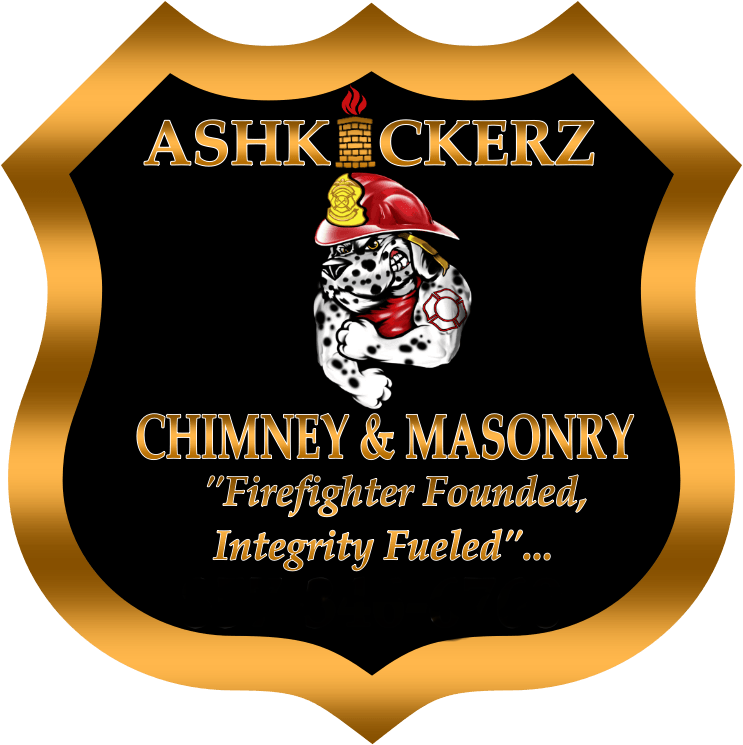Chimney Masonry Repair
Partial Chimney Rebuild
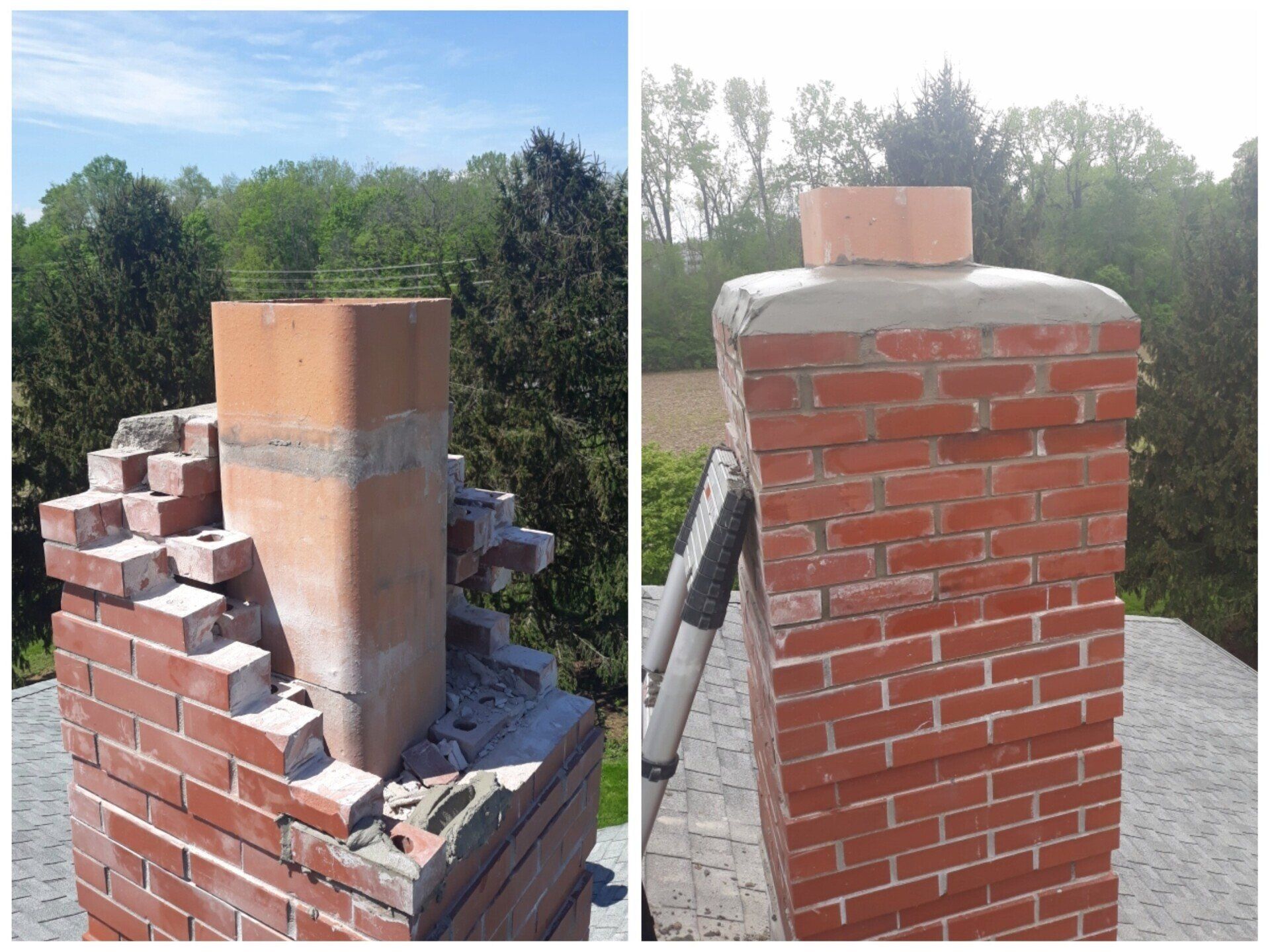
This is a partial rebuild of the damaged top part of a chimney, due to being built with a mortar crown. A few cracks in the crown and several years of moisture seeping into the brickwork, coupled with freeze & thaw was all it took. Considering the damage, we were able to grind out the damaged area and restore the chimney. Our customer was extremely pleased with the work and saved a lot of money on an estimate he received from another company, for a total rebuild.
Brick Replacement
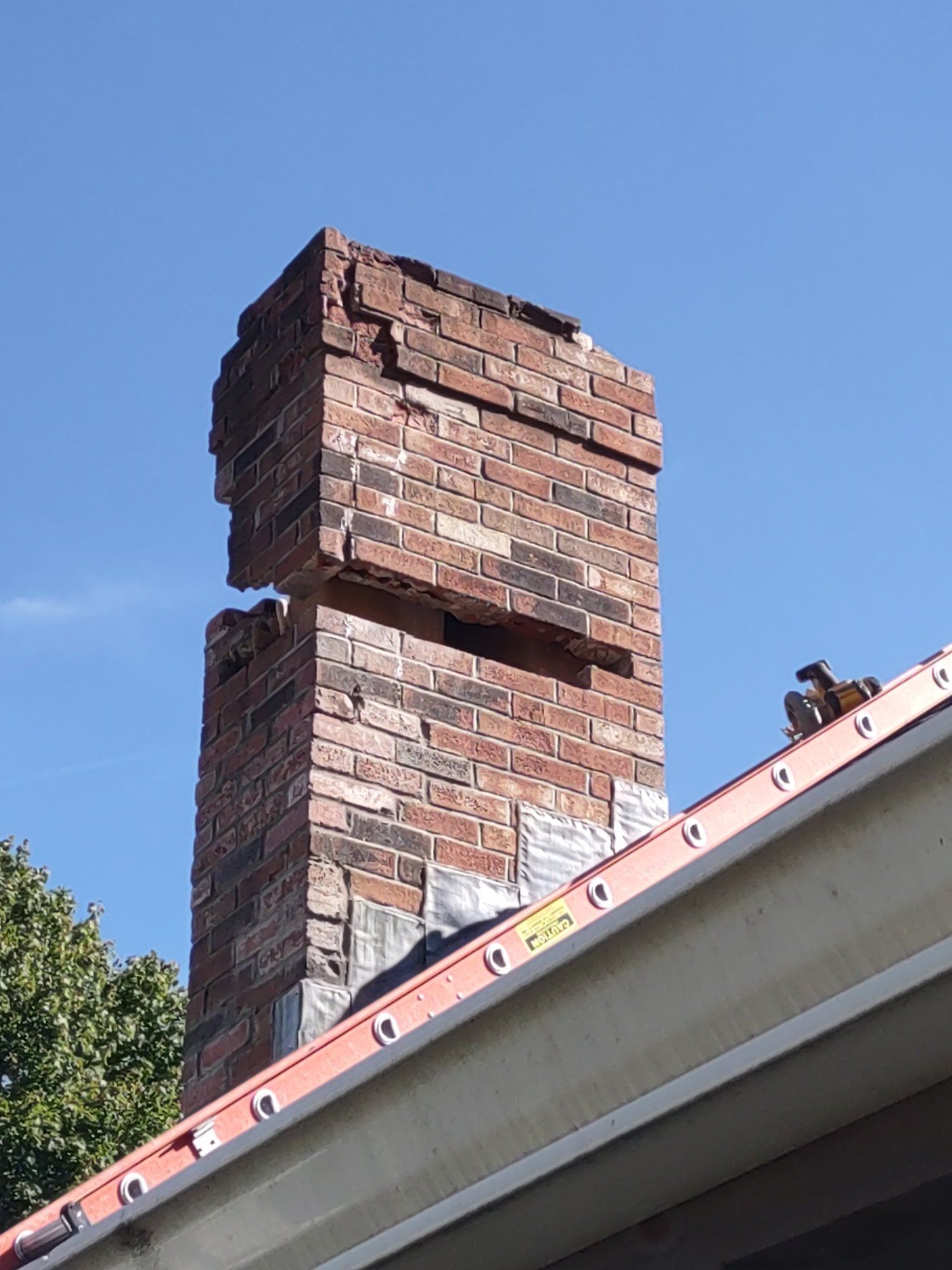
We had to literally take one damaged section out at a time. The good news is our customer saved money, We made a little money, and no one lost at Chimney Jenga. Win, Win!
Total Chimney Rebuild

Total rebuild; Unfortunately, all the Preventive maintenance in the world can't help you when Mother Nature decides to send a 200-year-old tree crashing through your chimney. Concidering the circumstances, the pitch of the roof, the hieght of the chimney, and icing my ankles down every night for a week, the rebuild went good.
Chimney Rebuild w/ Lift
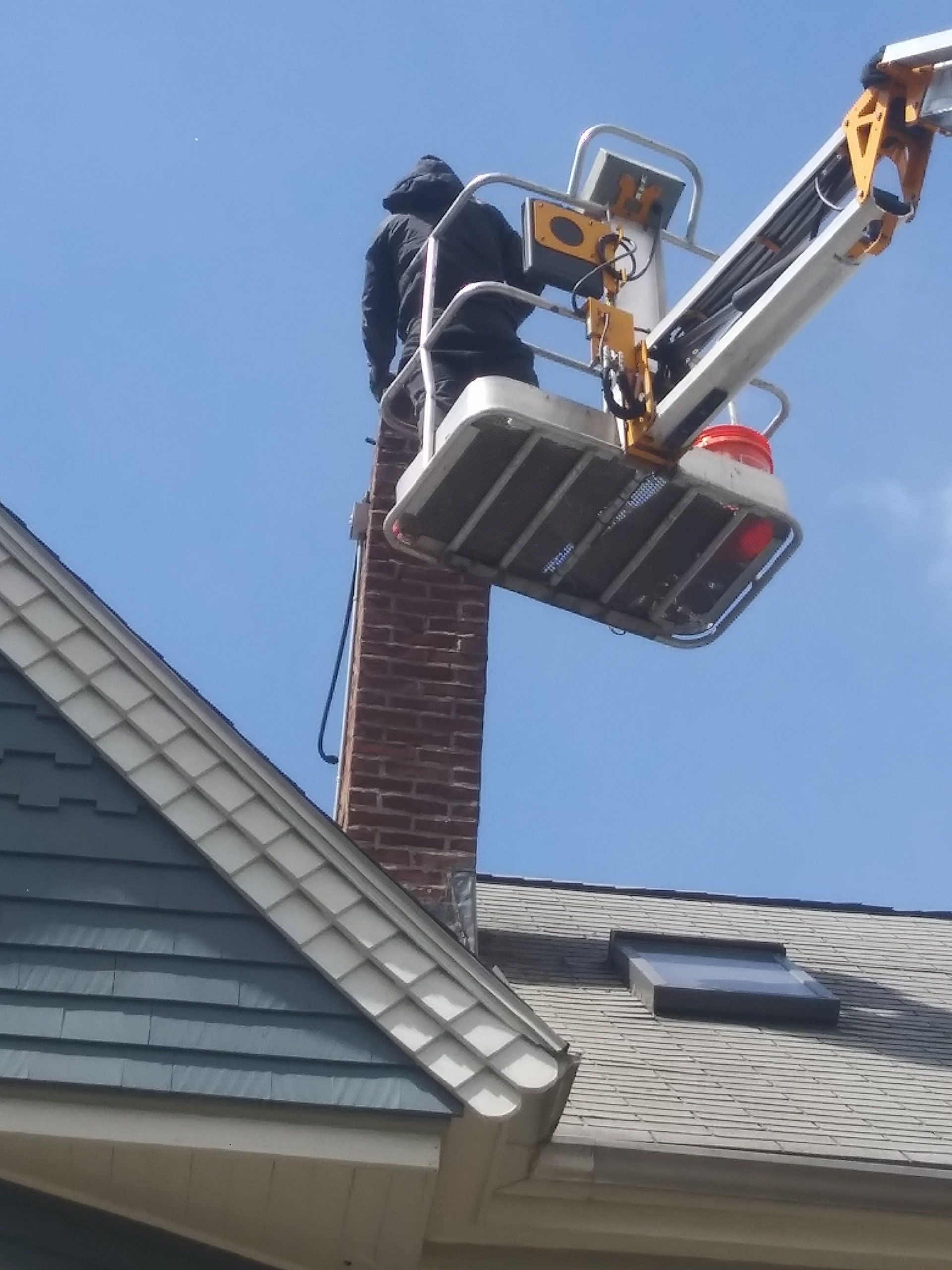
Tuckpointing /Pointing; Pointing is the process of Putting mortar back into the mortar joints of masonry or grinding out and replacing bad mortar joints. This can be a tedious process depending on the size of the project. Although it is somewhat time-consuming, it is an important part of keeping moisture out of your chimney/ brickwork.
Commercial Chimney Repair
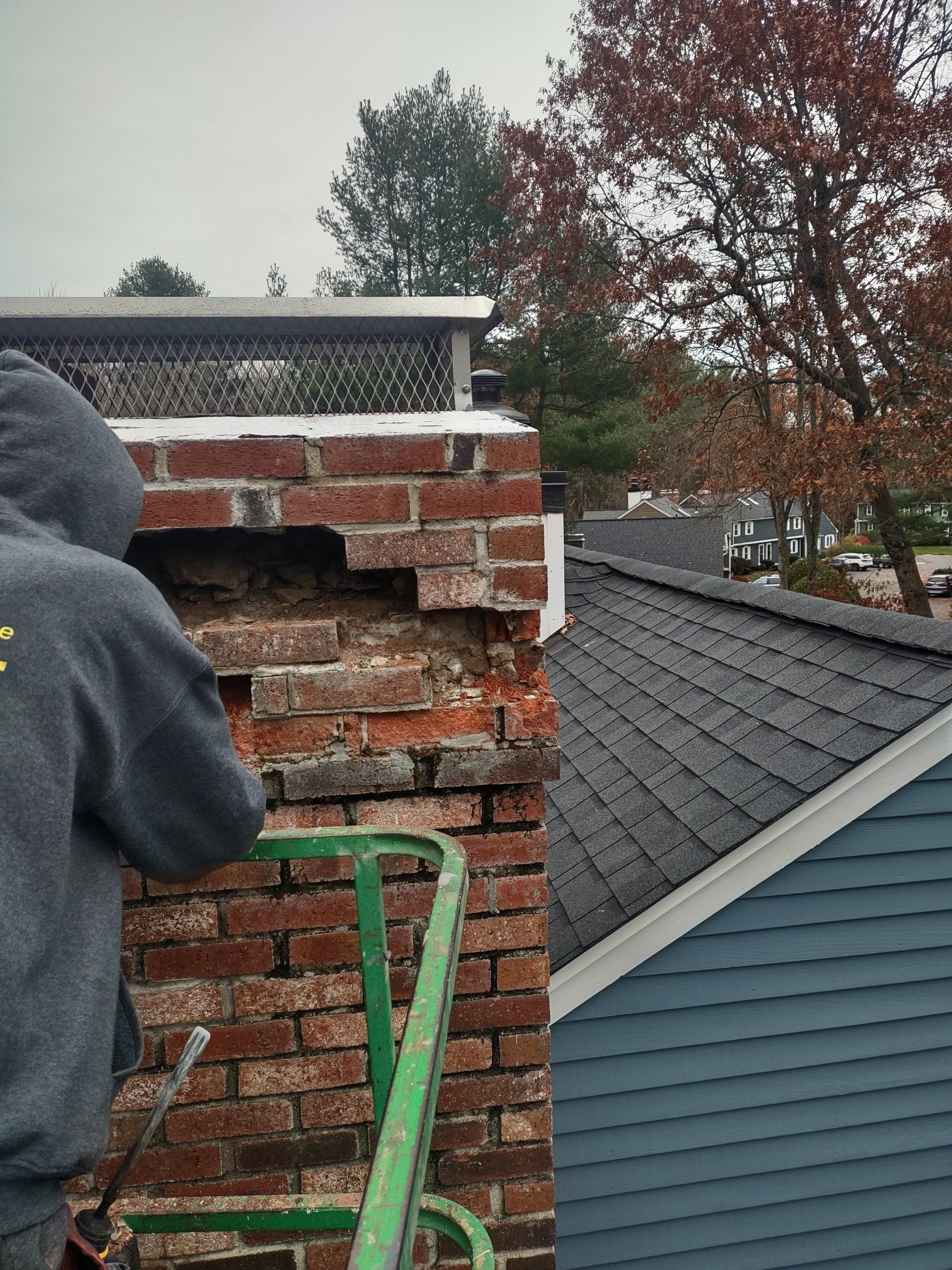
Grinding out and replacing bad brick and tuckpointing; Depending on where the chimney is located at your home, it's usually the Northside of the chimney that dries last, this is where your chimney is more variable to moss, algae, and usually the side that starts to show problems first.
Replacing Chimney Tiles
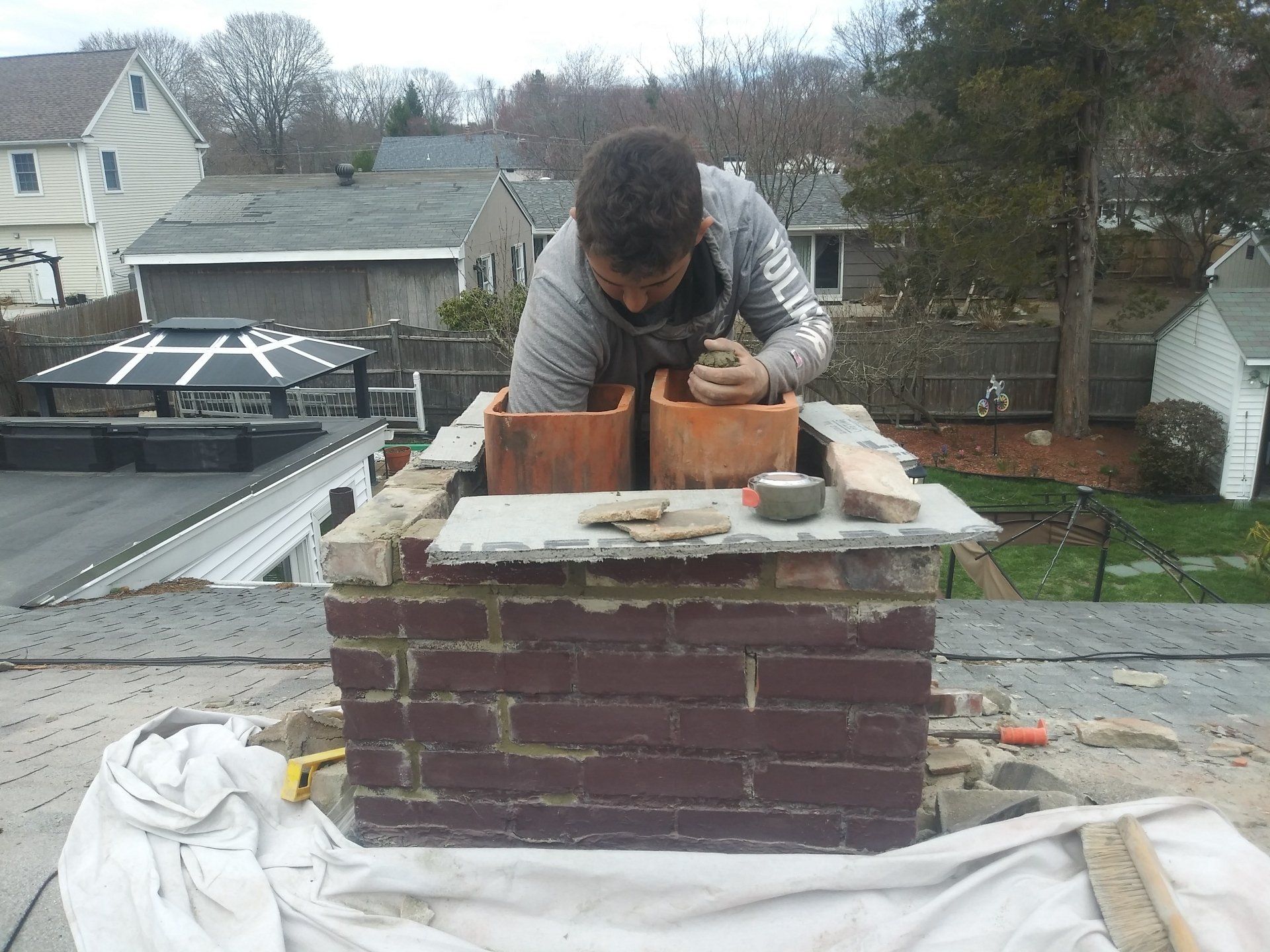
Not only is the chimney crown, brick, and mortar subjected to the weather, but also the clay flue tiles. These clay flue tiles usually come in 2 ft. sections and run the length of the utility it is serving. They are very susceptible to weather and the gases they vent. i.e. (CO2) and (CO). Oil and gas furnaces produce by-products and acids which can literally eat away the flue lining. This is when carbon monoxide poising can become a real and serious danger.
